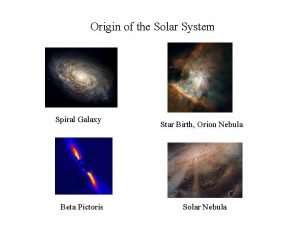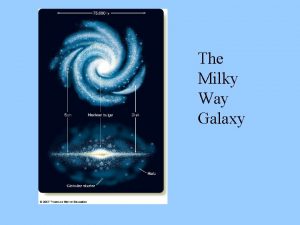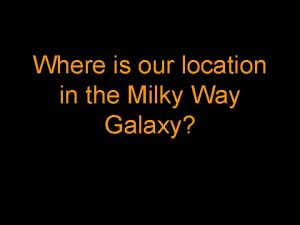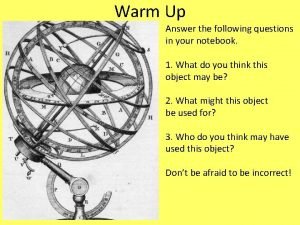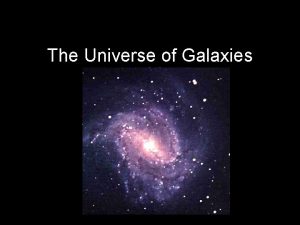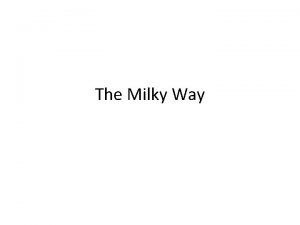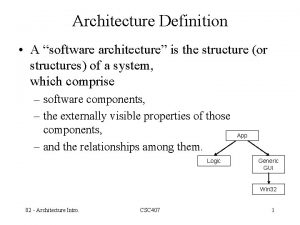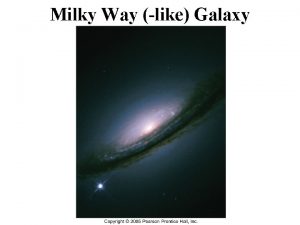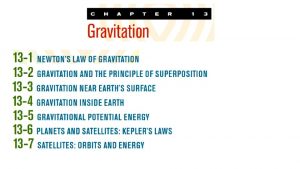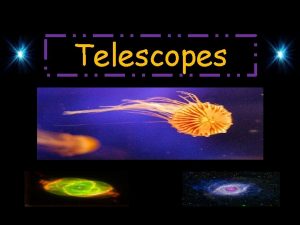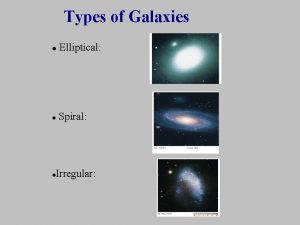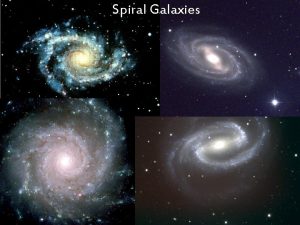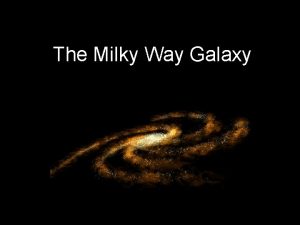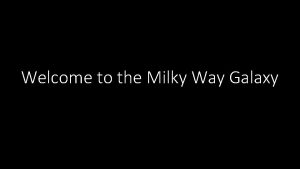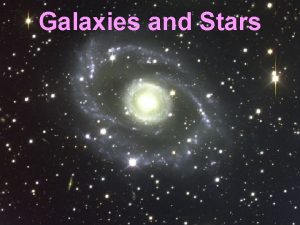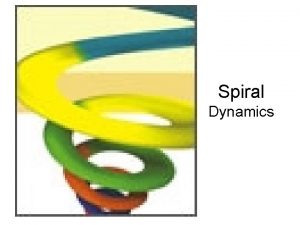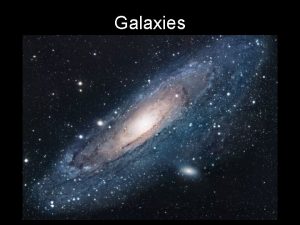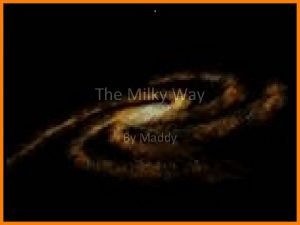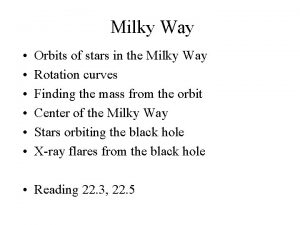Galaxies The Milky Way is a spiral galaxy




















- Slides: 20

Galaxies

The Milky Way is a spiral galaxy. Most galaxies that we can see are spiral galaxies. Looking at other spiral galaxies, we can begin to learn more about how the spirals work.

Spirals

Variety of Spiral Arms Flocculent spirals (fleecy) Grand-design spirals (highly organized)

What do you notice about the colors of the stars in the spiral arms of this galaxy?

The arms of spiral galaxies contain most of the bright, blue O and B type stars.

Stellar Lifetimes • Which live longer, Red or Blue stars?

Stellar Lifetimes • So the stars in the spiral arms are mostly bright, hot, and young stars!

Since O stars have such a short lifetime, it must be that: the arms of spiral galaxies are where star formation happens!

If stars form in the spiral arms, how do they end up getting spread out over the whole disk? Spiral arms are not permanent structures, rather they are locations where stars are forming.

If spiral arms are not permanent structures, then what is making these locations become active star forming regions? Spiral arms are caused by spiral density waves – a spiral shaped disturbances traveling through the disk of the galaxy that compressed gas and. triggers star formation.

This classification scheme is known as the Hubble Tuning Fork Scheme

Elliptical galaxies Barred Spirals

Galaxies that don’t seem to look like spirals or ellipticals are called…. Irregular

Galaxy Classification and Properties: Lecture Tutorial (handout) 1 2 5 6 3 7 4 8

Local Group Picture

The Local Group

The Andromeda Galaxy • The Andromeda Galaxy is the nearest large galaxy to the Milky Way. • It is 2. 5 million light years away. • It takes the light from the stars and gas in Andromeda 2. 5 million years to get to us. • That means, we see Andromeda as it was 2. 5 million years ago.

Imagine that you simultaneously receive the satellite transmission of two pictures of two people that live on planets orbiting two different stars. Each image shows the people at their 21 st birthday parties. Consider the following possible interpretations that could be made from your observations. Which do you think is the most plausible interpretation? 1. Both people are the same age but at different distances from you. 2. The people are actually different ages but at the same distance from you. 3. The person that is closer to you is actually the older of the two people. 4. The person that is farther from you is actually the older of the two people

Fifteen years ago, a quasar was observed that was found to be located 8 billion light years away. If our universe is approximately 15 billion years old, when did the quasar emit the light that we observe? 1. 2. 3. 4. 5. 0/0 15 years ago 7 billion years ago 8 billion years ago 15 billion years ago 23 billion years ago Cross-Tab Label
 How big is the galaxy
How big is the galaxy Milky way galaxy sketch
Milky way galaxy sketch Milky way galaxy shape
Milky way galaxy shape Solar system science olympiad
Solar system science olympiad Milky way galaxy
Milky way galaxy Spiral galaxy
Spiral galaxy Spiral galaxy
Spiral galaxy Dung beetle milky way
Dung beetle milky way Milky way description
Milky way description What is the name
What is the name Where is the solar system located in the milky way
Where is the solar system located in the milky way The milky way
The milky way Democritus milky way
Democritus milky way Fonterra milkyway
Fonterra milkyway Software architecture definition
Software architecture definition Tabel panjang lengkung peralihan
Tabel panjang lengkung peralihan Milky ribbon worm
Milky ribbon worm Milky appearance of plasma
Milky appearance of plasma Preparation of oxygen
Preparation of oxygen Pr��ce v cestovn�� kancel����i praha
Pr��ce v cestovn�� kancel����i praha Chapter 30 galaxies and the universe
Chapter 30 galaxies and the universe






